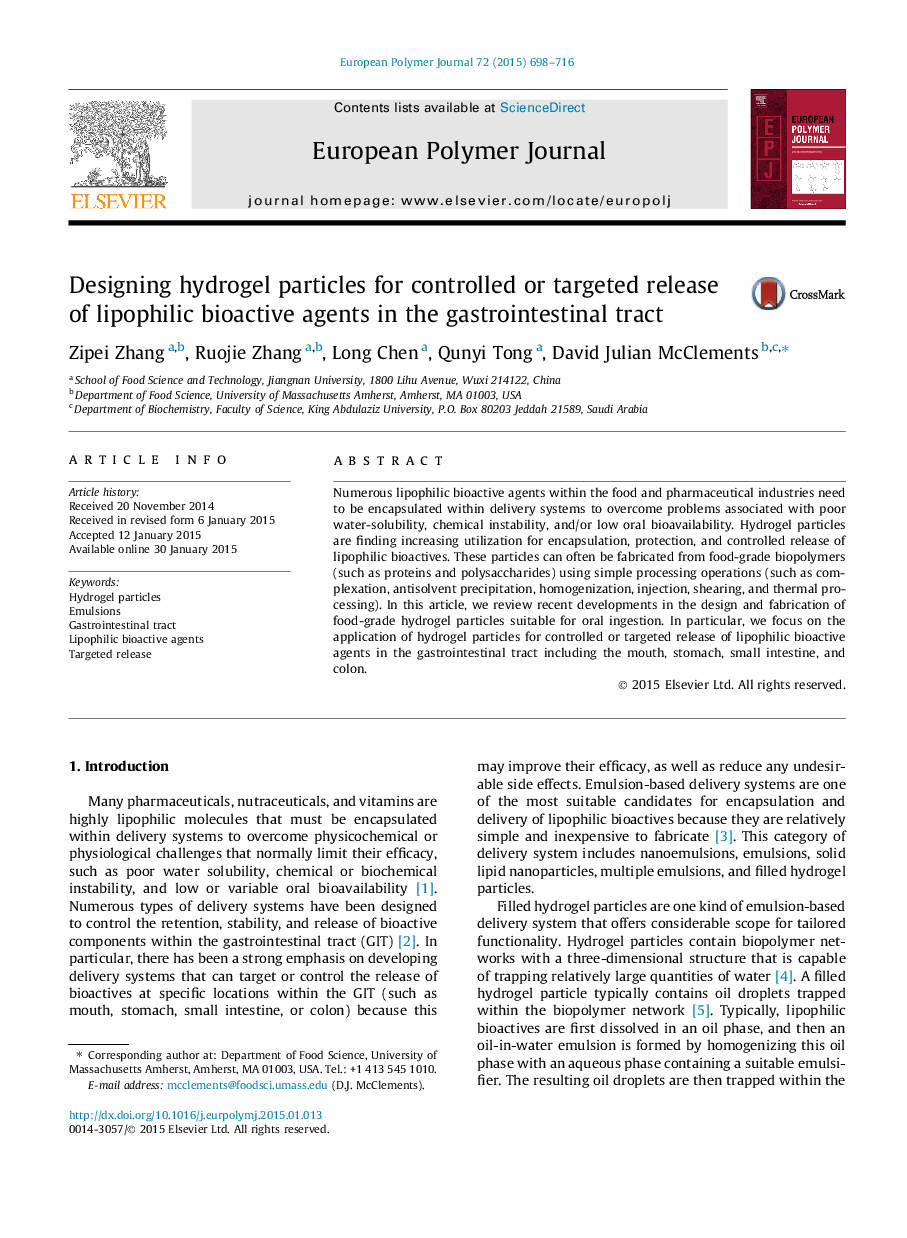| Article ID | Journal | Published Year | Pages | File Type |
|---|---|---|---|---|
| 1394704 | European Polymer Journal | 2015 | 19 Pages |
•Hydrogel particles can be used to retain, protect, and delivery bioactives.•These particles can be assemble from food-grade proteins and polysaccharides.•Particles properties can be controlled using different fabrication methods.•Hydrogel particles are useful in foods, cosmetics and pharmaceuticals.
Numerous lipophilic bioactive agents within the food and pharmaceutical industries need to be encapsulated within delivery systems to overcome problems associated with poor water-solubility, chemical instability, and/or low oral bioavailability. Hydrogel particles are finding increasing utilization for encapsulation, protection, and controlled release of lipophilic bioactives. These particles can often be fabricated from food-grade biopolymers (such as proteins and polysaccharides) using simple processing operations (such as complexation, antisolvent precipitation, homogenization, injection, shearing, and thermal processing). In this article, we review recent developments in the design and fabrication of food-grade hydrogel particles suitable for oral ingestion. In particular, we focus on the application of hydrogel particles for controlled or targeted release of lipophilic bioactive agents in the gastrointestinal tract including the mouth, stomach, small intestine, and colon.
Graphical abstractA variety of bioactive molecules or particles can be trapped inside filled hydrogel particles to alter their physicochemical properties and delivery.Figure optionsDownload full-size imageDownload as PowerPoint slide
